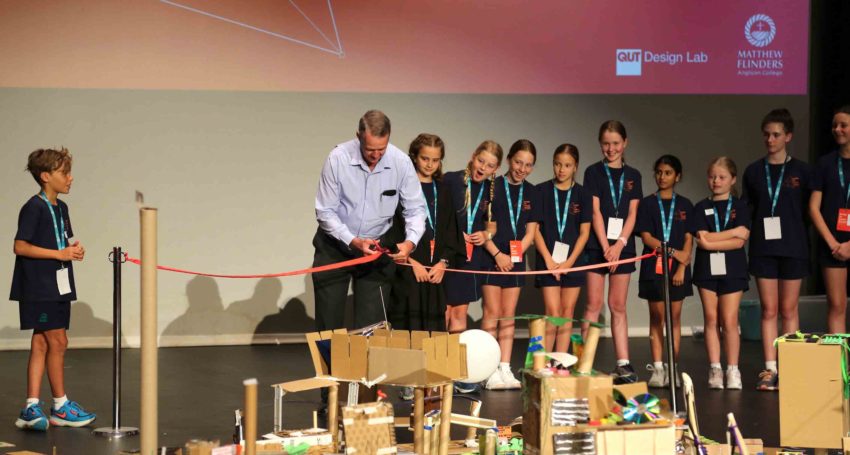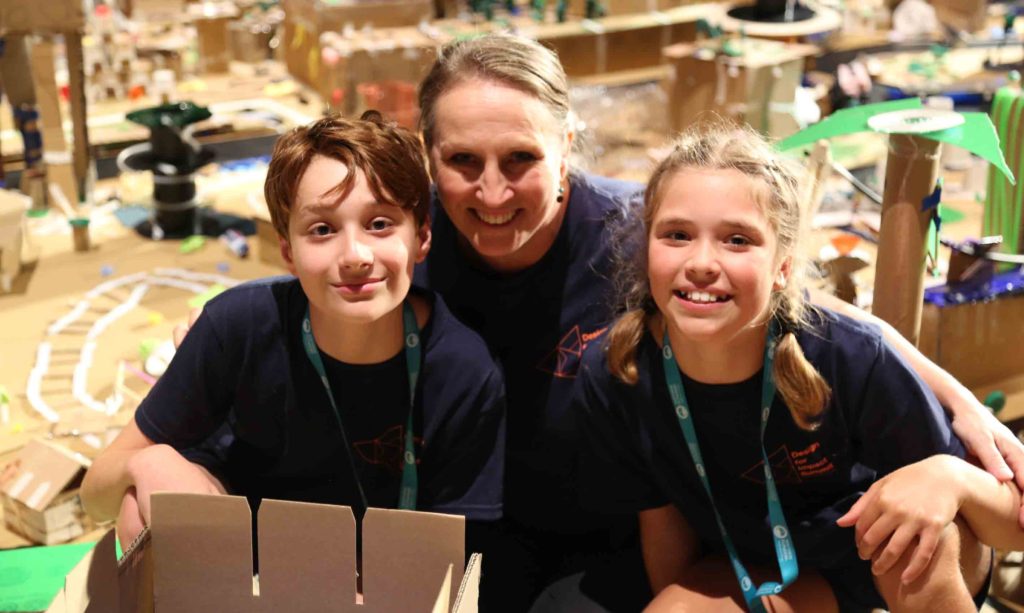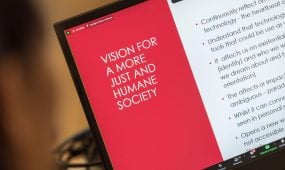Flinders students participate in two-day design summit
News
Students at Matthew Flinders Anglican College on the Sunshine Coast have designed a new world-class city from the ground up in partnership with the QUT Design Lab

Students at Matthew Flinders Anglican College on the Sunshine Coast have designed a new world-class city from the ground up.
In partnership with the Queensland University of Technology Design Lab and experts in design, the College hosted a ‘Design for Impact Summit’ immersion experience in October.
The summit was a surprise event for Flinders’ Year 5 students who, on the first day of Term 4, were tasked with the mission to imagine, design and prototype a smart, healthy, happy and sustainable Maroochydore City Centre for 2050.
The challenge was inspired by real-life city planning and takes into account that:
- The Sunshine Coast is one of the fastest growing regions in Australia.
- For the first time in history, the majority of the world’s population lives in cities.
- By 2050 it is estimated that three quarters of the world’s population will live in cities.
Flinders’ Head of Primary Trudi Edwards said Matthew Flinders Anglican College was committed to being a leading school in design thinking.
“The Design for Impact Summit challenged our students to look at the world differently,” Mrs Edwards said.
“Working in collaborative teams, our Year 5 students were asked to be ‘future thinkers’ and design a sustainable Maroochydore City Centre for 2050.
“This is all part of our College’s aim to give our students from Prep to Year 6 diverse and rich opportunities to experience first-hand the energy, excitement and possibility of design thinking.”

Matthew Flinders Anglican College Year 5 student Thomas Reeves, Head of Primary Mrs Trudi Edwards and Year 5 student Poppi Richardson at the Design for Impact Summit in October 2020
During the Summit, each student team was given a large-scale 3-D cardboard base cut-out of a different precinct as part of the greater city.
Teams were responsible for designing and then constructing their precinct using cardboard, collage material, recycled plastic, paints, glue guns, staples and other construction materials.
Once the precincts were completed with 3-D design features, the pieces were fitted together to construct a large-scale model of the future city.
During the event, the students’ work was disrupted when various expert consultants and leaders in the community ‘dropped by’ virtually to offer issues.
Issues were presented by a town planner, architect, politician, olympian, permaculturalist, local Indigenous artist and cultural performer, educational consultant, art gallery curator and Sunshine Coast Council consultant.
The students were challenged to understand and respond to the issues as they designed and constructed their group’s large-scale 3-D city precinct.
What the students said
Year 5 student Madison Wylie said it was an exciting way to kickstart Term 4 at Flinders.
“We didn’t know what to expect when the summit began on the first day of Term 4,” Madison said.
“The only clue we were given about the event was on the last day of Term 3 when we all sat down to watch the environmental movie, 2040, together.
“The movie got us thinking in different ways so when the summit began we had fun dreaming up some pretty wild ideas for a better city in 2050.
Advertisement
“One of our favourite design ideas was for floating buildings in our city to give residents plenty of natural space for parkland.
“Some of our ideas may actually be possible because in 30 years’ time technology will have advanced considerably.”
Year 5 student Olivia Blake had the important role of being the City Mayor during the Design for Impact Summit.
“The event was a lot of fun, especially because it was a surprise – we had no idea it was going to happen!” Olivia said.
“Being able to help design a city for 2050 and build it using cardboard and craft was exciting.
“As City Mayor, I had to stand up and speak in front of all the students and also the professionals who visited.
“I learned that being a mayor involves a lot of thinking and decision making on the spot.
“Over the two days, we learned the different steps of design from professionals whose job is to design new spaces every day.
Advertisement
“They taught us that it is better to start by creating things on a small scale so that you can test your ideas out to see if they will work before making them as a big project.
“The summit also taught us how to work well with other people. I learned that you get the best result when you collaborate and work respectfully together.
“It’s important to share your ideas and to listen to what other people think. When you combine your ideas, you may be able to create a better design.”

Year 5 Matthew Flinders Anglican College students William Kisby and Asger Kjaer at the Design for Impact Summit in October 2020
Why design thinking matters in primary school
Mrs Edwards said, “Design thinking is important because it helps our students to develop social and emotional skills and creative and critical thinking.
“Students also learn skills of empathy, collaboration and problem solving which are vital for leadership, community service and entrepreneurship when making a genuine difference in the lives of others.
“The summit was an exciting opportunity for our College to generate a unique learning experience for our students.
“As a College, we enjoyed a successful working partnership with top tertiary institution QUT’s Senior Lecturer Dr Natalie Wright, as well as with Sunshine Coast Council representatives and design leaders in our community, such as Director of Create Ed Leighann Ness Wilson.
“The outcomes will be transferred to our Primary School’s i-Impact units and other subject areas where we explore and develop skills in entrepreneurship, community service and leadership in action.”
Over the two-day summit, students considered:
- How ‘change’ impacts cities, technology and human behaviour.
- How cities work now.
- How to use one’s imagination to project into the future.
- How their precinct would fit with the other precincts to make a 3-D model of a viable future city.
Design thinking for democracy
Flinders’ Head of Teaching and Learning, Debbie Planck said the Design for Impact Summit was also an opportunity for students to understand the importance of active democratic participation and the power of collective decision making.
“Flinders is part of the highly lauded international Round Square network of member schools and so, during the summit, students used Round Square’s Ideal of Democracy,” Ms Planck said.
“As a result, students learned positive teamwork and negotiation skills built on democratic principles and experienced the meaning of respect, equality, mutual cooperation, persuasion and good communication.
“What’s more, the summit gave each student a unique opportunity to explore their creativity and take ownership of their learning in an exciting and practical way.
“It is astounding to consider the breadth and scope of engaged learning that occurred over just two days.
“In teams, students learned about governmental development processes, the design process in the realm of urban design, and how to be active participants in the design of their future on the Sunshine Coast.
“We knew that our Year 5 students were ready for this challenge and it was wonderful to see them thrive in such a dynamic, collaborative and high-energy environment.
“The learnings from the event will help us to fine tune the process so that we can involve more students in 2021 across our College of 1,300 students from Prep to Year 12.”





